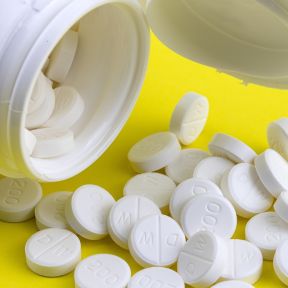ADDICTION- Update on Medications for Opioid Use Disorder. Known as MOUD, these medications work, but they’re underutilized.

It is established scientific fact that the most effective treatment for opioid use disorder (OUD) for most people includes medications such as buprenorphine, methadone, and naltrexone in combination with counseling and behavioral therapies. Meds plus talk therapy—that’s the one-two punch that often works best.

Yet despite the wealth of research and lived experience that confirm the efficacy of this approach, the use of medications for opioid use disorder, or MOUD, remains low.
In a 2021 JAMA Network research letter, for example, researchers found that just one in five U.S. adults with opioid use disorder were receiving medication for it. That utilization rate (20%) was lower still among minority groups.
Reasons for the underutilization are many, and I’ll touch on some of them in a minute. But first, some promising recent news on how MOUD is being used in a neighborhood near Chicago that has been ravaged by the overdose epidemic.
Decreasing cravings, saving lives
In 2022, 2,000 people died from opioid overdoses in Cook County, Illinois, which includes Chicago. It was an all-time high for the county, surpassing the previous all-time high of 1,935 deaths the year before. Most of the overdoses involved fentanyl.
In response to this ongoing crisis, concerned parties started a local initiative called Project LIFE. The acronym stands for Long-acting Injectable For Ending Overdose. The injectable is Sublocade, a form of buprenorphine, and it’s administered in the ER setting to people who are admitted after overdosing.
The key point: Long-lasting Sublocade can help manage cravings and withdrawal symptoms in opioid users for 28 days. This creates critical breathing space for the person to reduce their risk of death and get help in a more sustained way.
Definitive results are not yet available, but the Project LIFE people are hopeful it’s going to save lives.
What’s behind the low utilization of these meds?
Lots of things are at play here. Sometimes it’s a matter of people not being able to afford the medications. (They can be very expensive out of pocket.) Other times, health insurance doesn’t cover them, or doesn’t cover them adequately.
Also, many people can’t access the medications, either because they live too far from a health clinic or hospital, or because many primary care doctors aren’t licensed to prescribe the medicine.
It’s also the case that many doctors—licensed or not—are hesitant to prescribe MOUD. Many aren’t comfortable with or trained in addiction medicine, and would prefer not to treat patients with SUD for fear of being outside their expertise area.
Anti-medication beliefs are still with us
The reasons for underutilization of medications listed above are technical, or practical. But long-held beliefs also play a role. Two key ones include:
Myth 1: Taking opioid medication is substituting one drug for another.
This is inaccurate. Opioids like heroin and fentanyl are highly addictive, they take over your brain, and they routinely destroy lives. Medications for opioid use disorder don’t do that. They work on the reward center of the brain by targeting cravings. This gives people’s brains time to heal, so they can get their lives back.
Myth 2: This medication should only be used as a short-term bridge to total abstinence.
The science doesn’t support this. SUD is a chronic disease just like heart disease, diabetes, and cancer. Therefore, it requires long-term treatment to keep the disease at bay. Medications in combination with therapy are designed to do that.
Final thoughts
People are dying of overdoses at an alarming rate—especially young people. Highly potent opioid and fentanyl analogs are causing many of these deaths, thus it is critical that we use the proven tools at our disposal to help save lives.
Medications for opioid use disorder are some of the most powerful tools we have, with the important caveat that they’re not appropriate for everyone (no medication is).
For those who would benefit from MOUD, we need to make these medications more accessible, starting now.
- Questions and Answers
- Opinion
- Motivational and Inspiring Story
- Technology
- Live and Let live
- Focus
- Geopolitics
- Military-Arms/Equipment
- Sicherheit
- Economy
- Beasts of Nations
- Machine Tools-The “Mother Industry”
- Art
- Causes
- Crafts
- Dance
- Drinks
- Film/Movie
- Fitness
- Food
- Spiele
- Gardening
- Health
- Startseite
- Literature
- Music
- Networking
- Andere
- Party
- Religion
- Shopping
- Sports
- Theater
- Health and Wellness
- News
- Culture

